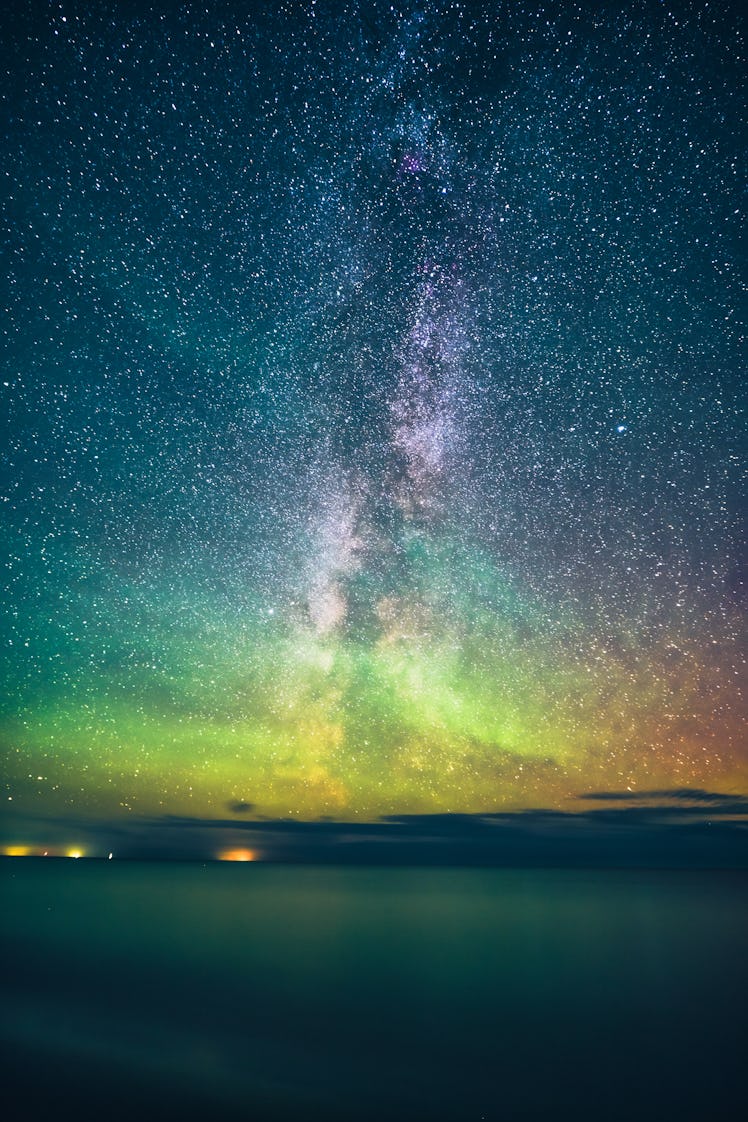What To Know About Catching The Northern Lights This "Aurora Borealis" Season
Interested in learning more about how to see the spectacular views?

For fans of the sky shows, this time of year is always exciting as we enter “Aurora Borealis season.” There's a reason it's known as the most beautiful sky, with magical colors and out-of-this-world beauty! Interested in learning more about how to see the spectacular views? Here's everything you need to know about catching the Northern Lights... and why there’s a seasonality to it at all.
What is the Aurora Borealis?
According to Space.com, the Aurora Borealis, also called the Northern Lights, are "beautiful dancing waves of light" that brighten the night sky. More scientifically, the lights are created from energized particles from the sun that "slam into Earth's upper atmosphere at speeds of up to 45 million mph," Space.com explains. The dancing lights come because Earth's magnetic field redirects those particles towards the poles and create exciting patterns.
The colors are dictated by the chemical composition of Earth's atmosphere. "Some of the dominant colors seen in aurorae are red, a hue produced by the nitrogen molecules, and green, which is produced by oxygen molecules," astronomer Billy Teets, the director of Dyer Observatory at Vanderbilt University in Nashville, Tennessee, told Space.com.
When is Aurora season?
Technically, it's always Aurora Borealis season, because those energized particles are constantly flying towards Earth. However, for those of us not living at the top of the world, there are some times in a a year where it's more likely we'll get a chance to see them — and we've entered that zone now.
EarthSky.com explains that "aurora season" comes around twice a year, in March and October. However, Aurora Zone says September and October are the best months where seeing the Northern Lights would be more likely, plus it puts on the prettiest shows.
"September and October are usually the only months when the Northern Lights are visible at the same time as the lakes and rivers remain ice-free," the site explains. "The beauty of this is that you will often see the Northern Lights overhead and reflected in open water at the same time. It can be a truly spectacular sight."
Will I be able to see the Aurora Borealis from home?
Unfortunately, the chances of seeing the Aurora Borealis this season from home — unless you live very, very far north — aren't likely. However, there was a small opportunity to catch the lights last month when a "geomagnetic storm" pushed the lights further down than is typically seen, and those chances come a few times a year for people in the north of North America (like residents of Michigan and Vermont.)
As for whether anyone in the lower 48 states are likely to see some dazzling lights this season, as of now, it’s unclear. If you want to find out how or if you can see the Aurora Borealis from where you live, the University of Alaska Fairbanks' Geophysical Institute gives many details, including the best time to see it where the brightest lights can be found.